Arkeofili [external link], a Turkish online magazine and portal dedicated to archaeological news and reports on archaeological sites and discoveries in Turkey and the world approached DAI’s Göbekli Tepe research staff with a couple of questions regarding excavations at site and the current state of research. Since the recently published interview [external link] received broad interests and we were repeatedly asked if an English translation was available, we are pleased to provide it here with courtesy of the Arkeofili staff for those not fluent in Turkish.
What you always wanted to know about Göbekli Tepe.
(Interview by Arkeofili staff with Jens Notroff, DAI.)
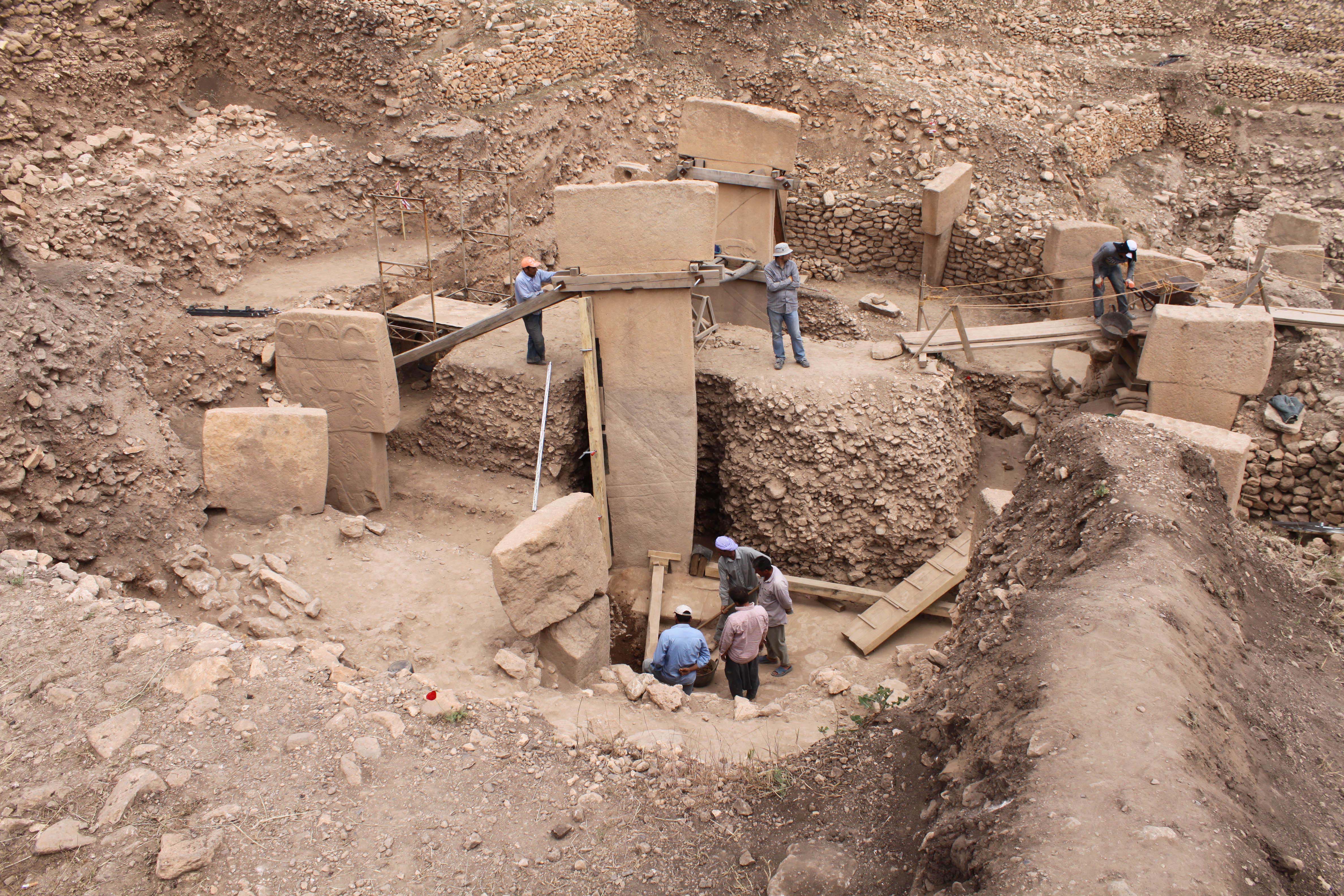
(Photo: DAI, O. Dietrich)
What is Göbekli Tepe and what is it not? Is it a temple, a house, or both (since E. B. Banning put forward that it could be domestic houses)?
That’s actually the crucial question: What was it? And that’s the challenge as well – since we do not have any written sources from that time explaining anything about world view and everyday life of the Neolithic hunter-gatherers who created this and related sites, we have to form our interpretations exclusively on the material culture they left to us.
After about 20 years of excavation and research we start to perceive the site of Göbekli Tepe as a kind of meeting point. A gathering centre of several groups of hunters roaming the area (based on iconographic parallels in the decoration of stone vessels, plaquettes etc. we may assume a catchment area of up to 200 km). Apparently, Göbekli Tepe was an important point in the landscape for regular encounters and exchange.
It is somehow true that archaeologists often all too easily use the term ‘ritual’ to describe finds and features we do not understand. And it is also true that the distinction of sacred versus profane as two strictly separated spheres is a rather modern, western view. However, we did not come up with our interpretation out of the blue – there are a couple of peculiar features about Göbekli Tepe supporting these ideas.
-
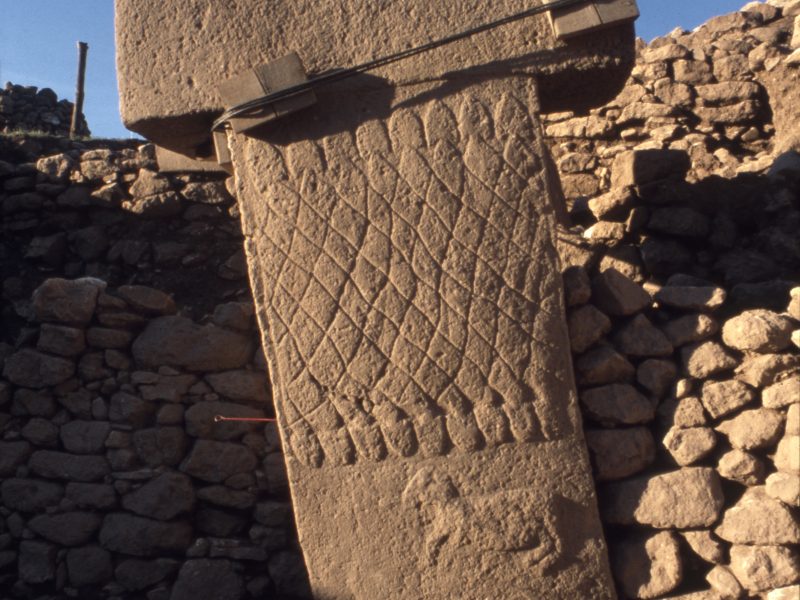
-
Pillar 1 in Enclosure A shows a net-like pattern formed of snakes and a ram (Photo: C. Gerber, coopyright DAI).
-
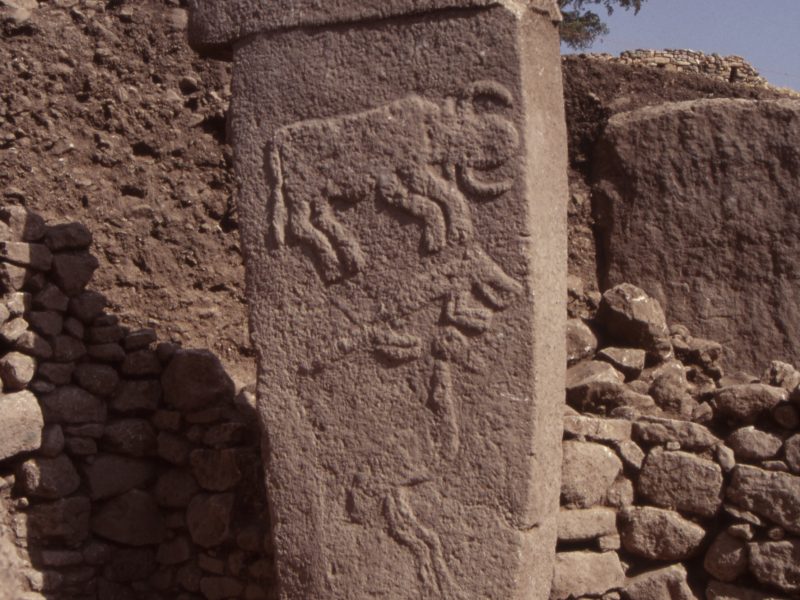
-
Pillar 2 in Enclosure A with a vertical sequence of three motifs: bull, fox and crane (Photo: C. Gerber, copyright DAI).
Since we do know the typical settlement architecture of this area and period from other contemporary sites like Nevalı Çori and in particular Çayönü in the Turkish Tigris area or Mureybet and Jerf el Ahmar in the Syrian Euphrates region, we can note that the structures at Göbekli Tepe do differ from these. The monumental circular enclosures of the older PPN A layer of Göbekli Tepe with their characteristic large T-shaped monoliths form a different, a very distinct kind of building. A type which indeed can be found in a lot of the known settlements as well – structures we usually call ‘community’ buildings. Yet while there mostly in settlements only one example of these special purpose buildings can be found, at Göbekli Tepe there seems to be a noticeable cumulation of these. Whether we really would need to call them ‘temples’ basically depends on a definition of that term we agree on. Yet usually the historic characterisation of temples would ask for some deity (or deities) being housed there – a complex concept of religion we could not provide for the early Neolithic as of yet. However, with hands and arms and elements of clothing depicted in relief, the characteristic T-pillars of Göbekli Tepe clearly own an anthropomorphoic identity and thus could be understood as monumental sculptures. Highly abstracted, faceless, larger-than-life depictions which clearly are taking up a different sphere than the naturalistic life-sized sculptures also known from the period.
What has Göbekli Tepe changed about our knowledge of history? Why is the discovery of and the information gained from Göbekli Tepe so important?
The most important discovery about Göbekli Tepe may have been the insight into what seems to be a very complex degree of organization within and among these early Neolithic hunter-gatherer groups. To construct monumental architecture like the Göbekli Tepe pillars and enclosures indeed must have asked for a certain degree of labour division as well as cooperation between different groups, organization and coordination of this work. The realisation that these still highly mobile people invested time and effort into rather large-scale communal projects and thus may have triggered a whole slew of development subsequently leading into the so-called Neolithic lifestyle with larger settled communities, agriculture, and husbandry, is an important contribution to our understanding of the Anatolian Neolithic. Food would need to have been made available for workers gathered there, and demands may soon have exceeded returns of prevailing hunting and foraging strategies – and thus may well have been led to the exploration and exploitation of new food sources. To some degree this somehow turned around cause and effect of our earlier picture of these line of events.

(Photo: DAI, O. Dietrich)
Why would/could the people of that time need a monumental building such as Göbekli Tepe?
Ethnographic studies have shown that communal projects and feasts are an important factor to strengthen group cohesion. Particularly rather small gunter-gatherer bands are essentially reliant on regular meetings to exchange information, goods, and marriage partner for instance to keep the gene pool fresh. It surely is no coincidence that the site of Göbekli Tepe was created where it is – on the highest point of the mountain ridge, a landmark widely visible. Against this background it seems suitable to interpret the architecture there as mark of these gatherings. The pillars with their rich depictions representing groups and somehow storing their memory. Large amounts of animal bones, hunted game strictly, speak in favour of huge feasts hold here and residue in stone vessels with a capacity of up to 160 litres may even hint at the consumption of alcoholic beverages. So-called workforce feasts like these (this is another insight from social anthropology) are a great means to attract the mapower necessary to carry out large communal projects like the constructions at Göbekli Tepe undoubtly must have been. Regular reparation and re-arrangement within the enclosures furthermore gives the impression of on-going continued construction activity, making it even more probable that this was an important factor of the site at all: a reason to bring people together.

(Photo: DAI, E. Kücük)
Do we know what the approximate manpower is needed to build Göbekli Tepe? Were there any experimental projects/research about how the structures were built? Or is anything of that sort planned for the future? Do we have any information on the building techniques?
The surrounding rock plateaus of Göbekli Tepe clearly give us an idea on how these prehistoric stone masons were working. Next to a number of ‘negative’ hollows, where workstone pieces were extracted, a huge amount of flint and bedrock stone tools as well as some unfinished pieces like broken T-pillars and other work pieces clearly illustrate how and where the Prehistoric masons were working.
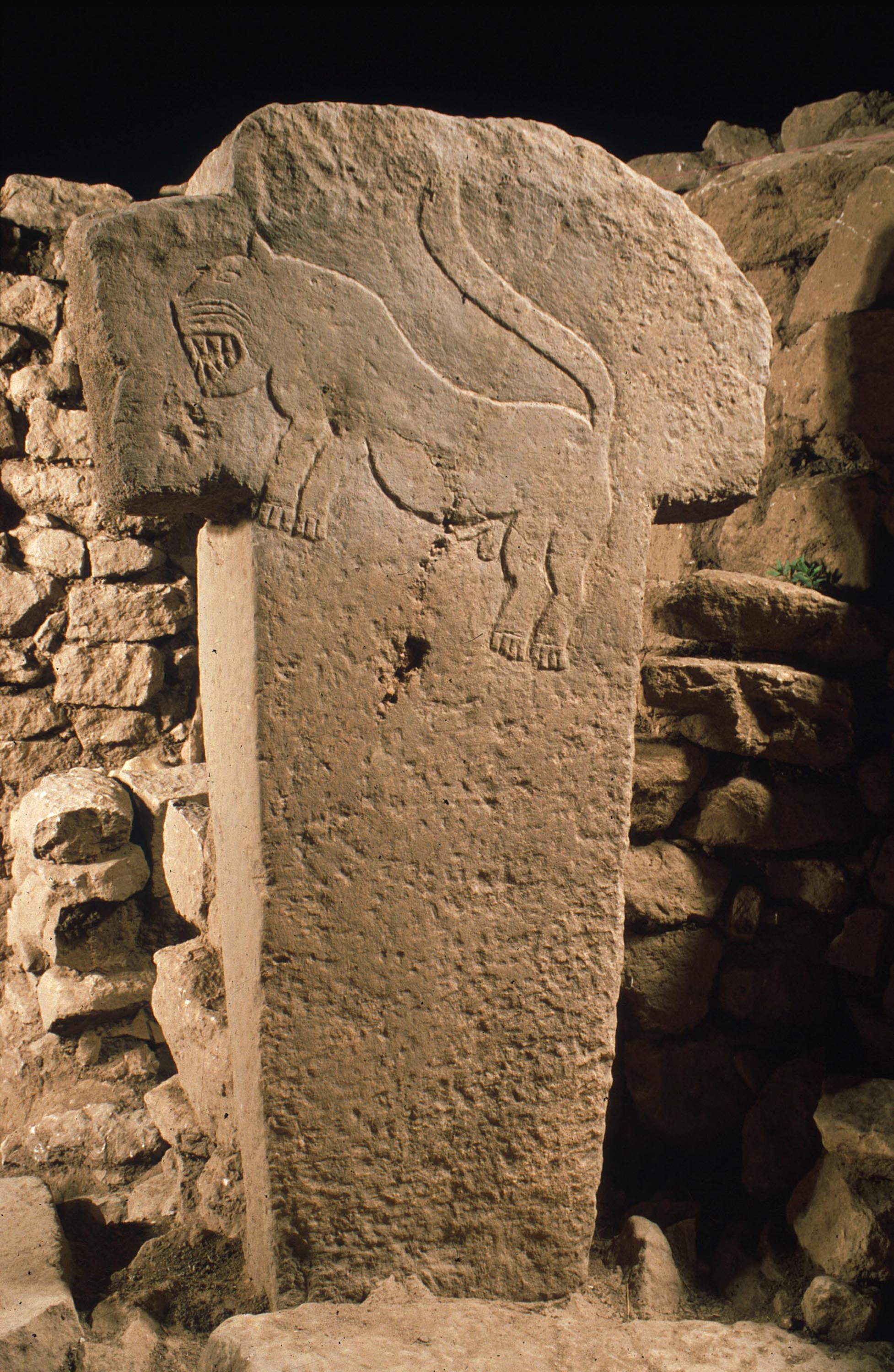
(Photo: DAI, D. Johannes)
Calculating exact numbers for the necessary workforce, however, would be a bit more challenging since too many factors need to be considered. Figures for the erection of the giant moai statues of Rapa Nui (Easter Island) for instance are ranging from 20 up to 75 people which would be required to move one of the statues over a distance of 15 km. Yet ethnographic records from the Indonesian Island of Nias mention up to 525 men involved in hauling a megalith of 4 m3 over a distance of 3 km to its final location. Another example from Indonesia points out that such a large number of participants is not necessarily caused exclusively by the labor involved, but that other factors have to be kept in mind as well. In Kodi, West Sumba, the transport of the stones used for the construction of megalithic tombs itself is ritualized and requires a large number of people to be involved as witnesses. Thus, also social aspects like the acquisition and maintaining of prestige among the individuals participating needs to be incorporated into the models of the erection of monumental structures.
Experiments were carried out recently by colleagues to get an idea how much work and effort would have been involved into the several processes of breaking and working the stones pieces, but are still awaiting final evaluation and publication. It should be noted that these results, while delivering useful insights, could be approximate values at best since they hardly could exactly match the skills of Prehistoric specialized craftsmen.
What does Göbekli Tepe tell us about the hierarchical organisation of people at that time?
Like already discussed above, the probably large amount of workforce necessary to create the enclosures of Göbekli Tepe speaks in favour of an emerging complex social structure. We were used to assume these hunter-gatherer bands are organised strictly egalitarian, yet a communal project like this involving different groups and complex constructions must have asked for at least some degree of coordination and labour specialisation.

(Photo: DAI, K. Schmidt)
Is there any evidence for any production activities in Göbekli Tepe (for instance agriculture, or beer-brewing as was mentioned by Dietrich et al.)?
Traces of typical domestic activities are missing so far at Göbekli Tepe, as are any traces of Prehistoric agriculture or husbandry – any remains of plants and animals discovered as of yet hint at the respective wild forms only.
However, numerous flint tools and flint flakes clearly hint at flint knapping on a grand scale taking place at and around Göbekli Tepe. The possible production of beer in the frame of large scale feasting is indeed a point worthy of discussion in the frame of these already mentioned large feasts – since preliminary chemical analysis hints at oxalate residues in large stone vessels at the site.

(Photos: DAI, K. Schmidt & N. Becker)
What do you think of the depictions on the steles? What could they be telling us – could they be narrating something?
The wide range of varying motifs and recurrent symbols (and combinations thereof) suggests that these are not mere decorative elements; these depictions rather have an extraordinarily complex, mythological, content with indeed a likely narrative character. The symbols themselves are plain to see (naturalistic portrayals interchange with strongly abstract signs) and yet the meanings behind them, so obvious to the people in the Neolithic, remain hidden from us today. Of particular note is, however, the absence of what might be termed mythological hybrids and monsters; all animals depicted at Göbekli Tepe occurred naturally near the site, i.e. are species of Eurasian wild fauna.
-
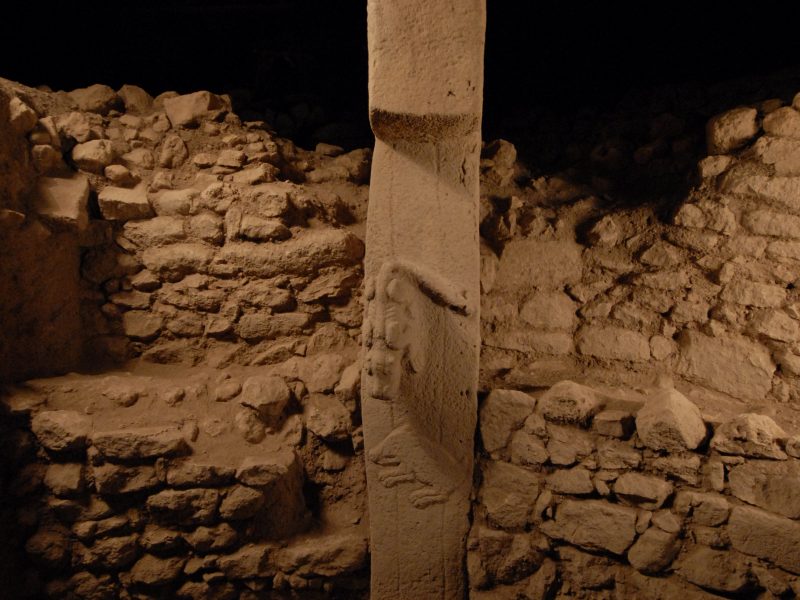
-
Pillar 27 in Enclosure C (Photo D. Johannes, copyright DAI).
-
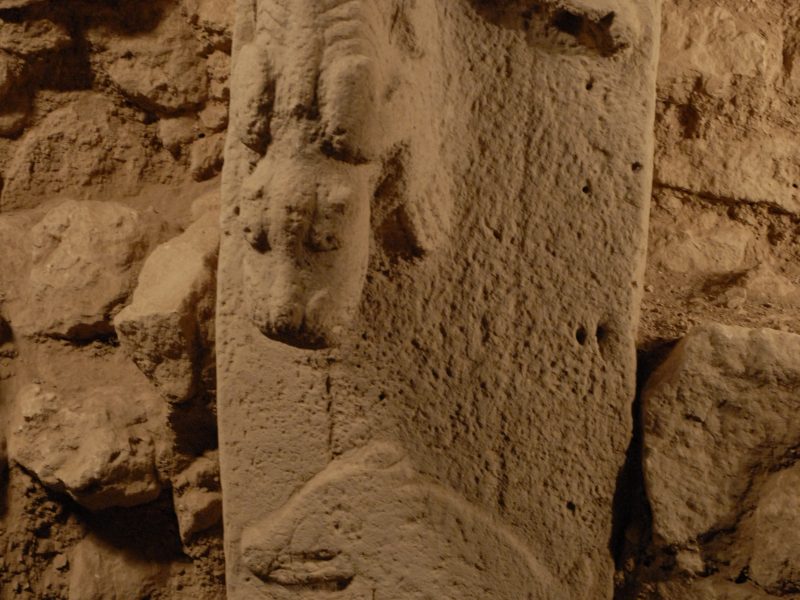
-
Pillar 27 in Enclosure C, detail of predator in high relief and boar in low relief (Photo D. Johannes, copyright DAI).
The numerous wild and dangerous-looking animals found adorning the pillars may have fulfilled some kind of protective function, perhaps comparable to totem animals found in more recent foraging cultures, or they may have acted as ‘guardians’ of the enclosures. Interestingly, the symbols and motifs discovered at Göbekli Tepe have also been found at numerous other Neolithic sites in Upper Mesopotamia, where they were applied to stone vessels, so-called shaft straighteners, and various other objects. This suggests the existence of a larger community with a common belief system, shared mythological traditions and iconography. Göbekli Tepe might have been one of its ritual centres.

(Photo: DAI, Nico Becker)
Did you find evidence for any ritual stages or processes before the intentional burying of the structures? Were you able to discern a shared procedure for the burial of all the structures? How do we know they were intentionally buried?
The site as we see it today is the last stage of a supposedly much longer use-life. Thus we do basically find this latest phase of activity, the backfilling, represented in the archaeological record. The rather homogenous nature of the filling material within the enclosures, consisiting of limestone rubble, sculpture and stone tool fragments, and a significant amount of animal bones, speaks in favour of intentional backfilling events. Other than this filling material, finds within the enclosures which could be linked to their actual use are rare. In most cases it looks like the enclosures were almost cleared prior the filling event. A stone plate and boar sculpture placed at the foot of one of Enclosure C’s central pillars seems to have been placed there in a delibirate act.

(Photo: DAI, K. Schmidt)
However, there must have been some knowledge of the structures even some time after they were backfilled and ‘buried’ since the later architecture (like a terrace wall on top for instance) clearly makes reference to the former enclosures’ space. Also a pit dug into the filling of Enclosure C, clearly directed at the central pillars, underlines this impression, maybe the tops of some pillars were even still visible then (which might also explain the addition of cup marks to some of the larger pillars’ heads).
Have you found any female figures or depictions in Göbekli Tepe? Does this tell us anything concerning a male dominated society, possibly?
So far, every known depiction – as long as their sex is clearly recognizeable – seems to be male, be it animals or humans. The only exception is a later added grafitto of a single woman on a stone slab in one of the later PPN B buildings.
While this may somehow denote the site of Göbekli Tepe as a refuge of male hunters, it does of course not at all mean that women did not play a role in PPN society. There is a wide range of finds clearly connected to women in the contemporary settlements for instance – however, at Göbekli Tepe they (respectively their activity) remain invisible as of yet.

(Photo: DAI, K. Schmidt)
Currently, what are the primary research questions you’re seeking answers to? What themes/questions have priority for the Göbekli Tepe team?
The future still holds a lot of work for ongoing excavation and research. We are in the lucky position now to have gathered a substantial amount of material to be examined and analysed. While in particular conservation issues are an important factor of the research project’s coming task (ensuring proper protection and preservation of the excavated structures), we are also looking forward to finally clarfiy the site’s complex stratigraphy and internal chronology which still is one of the major research questions. Furthermore we aim to expand knowledge of prehistoric building methods and histories due to renewed detailed building research in the excavated PPN A and B structures at Göbekli Tepe while the important bioarchaeological work looking into the complex history of animal husbandry, as well as analysing finds of human bone material will of course be continued.
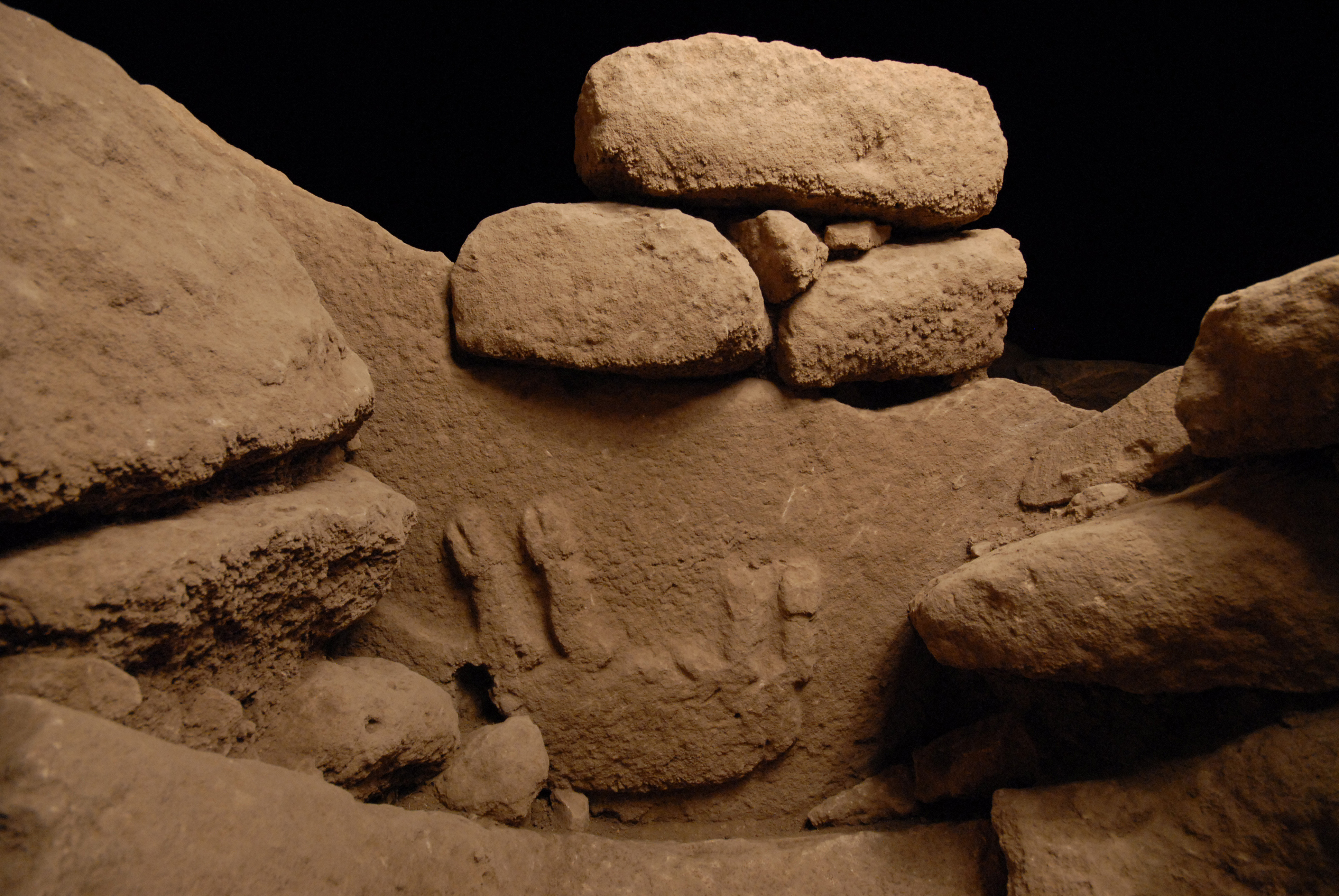
(Photo: DAI, D. Johannes)
How does the work here continue after Klaus Schmidt?
Upon the death of Klaus Schmidt, responsibility for the German Research Foundation-funded project “The early Neolithic society of Upper Mesopotamia and its subsistence” passed to Prof. Dr. Ricardo Eichmann of the DAI, Orient Department for which Dr. Lee Clare coordinates the work of its research staff. Heritage issues at Göbekli Tepe are coordinated by Prof. Dr. Felix Pirson from DAI’s Istanbul branch.
Close cooperation has also been established with the Şanlıurfa Museum, whose director acted as site director (Kazi Başkanı) at Göbekli Tepe since September 2014.
In other areas, the Turkish authorities established a ‘Scientific Advisory Board’ to facilitate collaboration between project stakeholders. This board comprises three eminent Turkish archaeologists: Prof. Dr. Mehmet Özdoğan (University of Istanbul), Doç. Dr. Necmi Karul (University of Istanbul) and Prof. Dr. Gülriz Kozbe (Batman University).
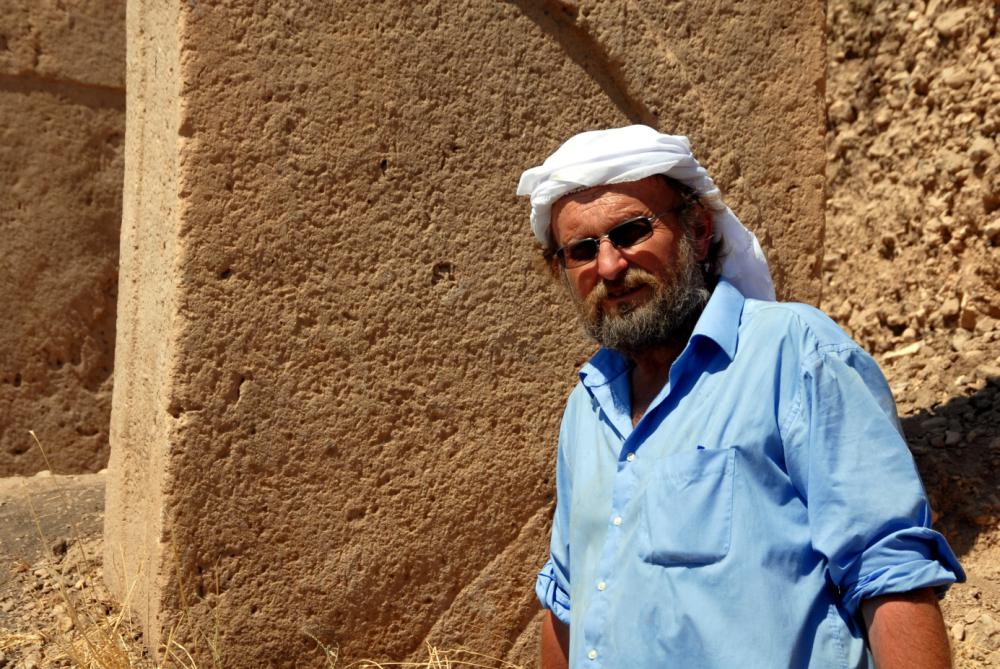
(Photo: DAI, D. Johannes)
What questions/problems/issues do you personally find the most exciting and interesting in Göbekli Tepe? What may the future research shed light on in the upcoming years?
Personally, I am interested in the social implications the findings at Göbekli Tepe put forward: How does the society structure of these hunter groups change once complex communal projects demand cooperation and coordination? When do elites form and rise – and how do they represent themselves?
Furthermore I am also involved in the still challenging task of revising and developing a coherent stratigraphy of Göbekli Tepe’s complex layers and features. This, together with the preparation of a couple of monographs regarding the results of about 20 years of research, it’s finds and findings will be an important task within our research for the coming years.
What do you think may be the pros and cons of the promotion and publicity projects that were recently started at/for Göbekli Tepe?
The public has a justified interest in this kind of research and its results. We are not doing this for our own or to fill up museums and bookshelves, but to actually answer the essential questions probably all of us keep asking: Where are we coming from and how do we get here? Göbekli Tepe certainly is one of those sites considered part of our shared cultural heritage – it is within the realm of interest but also responisbility of each of us. So, of course public campaigns and information projects are definitely considered an important part of our work and indeed supported.
Thank you!
My pleasure, thank you too!
(Original interview published in Turkish at arkeofili.com on September 18 2016; English version by courtesy of arkeofili staff; Turkish translation by Suay Şeyma Erkuşöz, Ayşe Bursalı.)
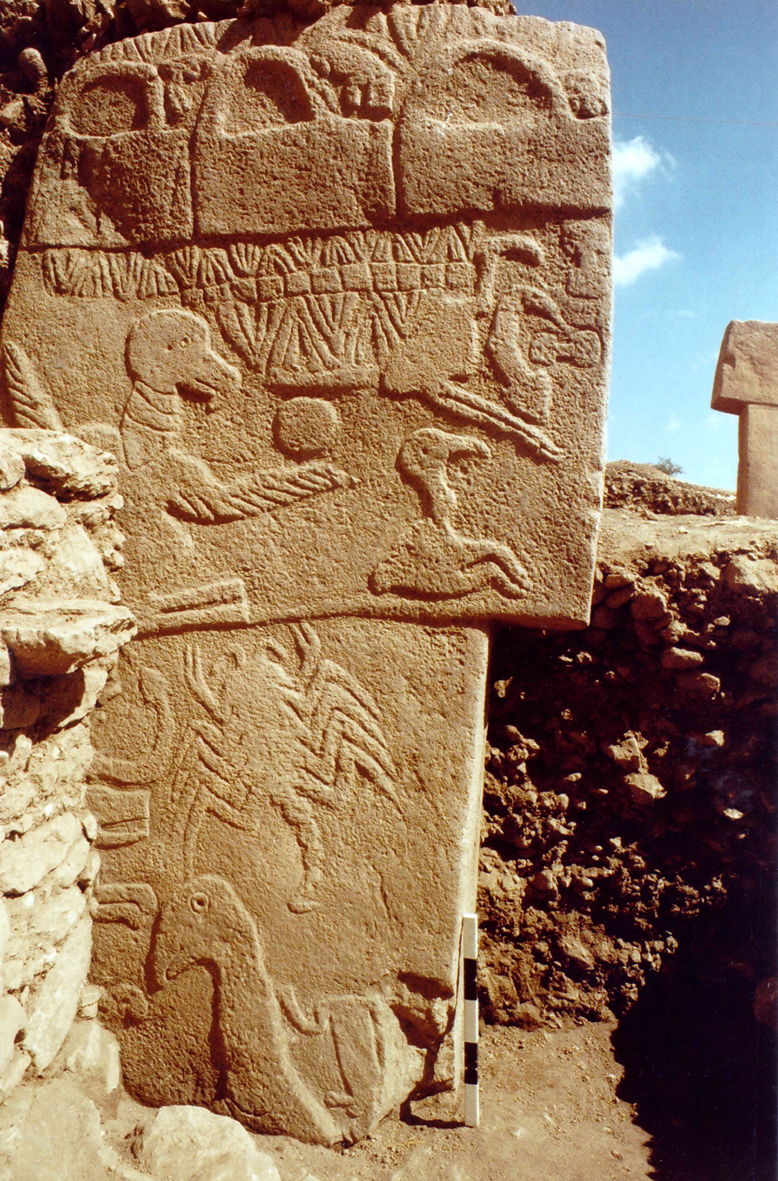
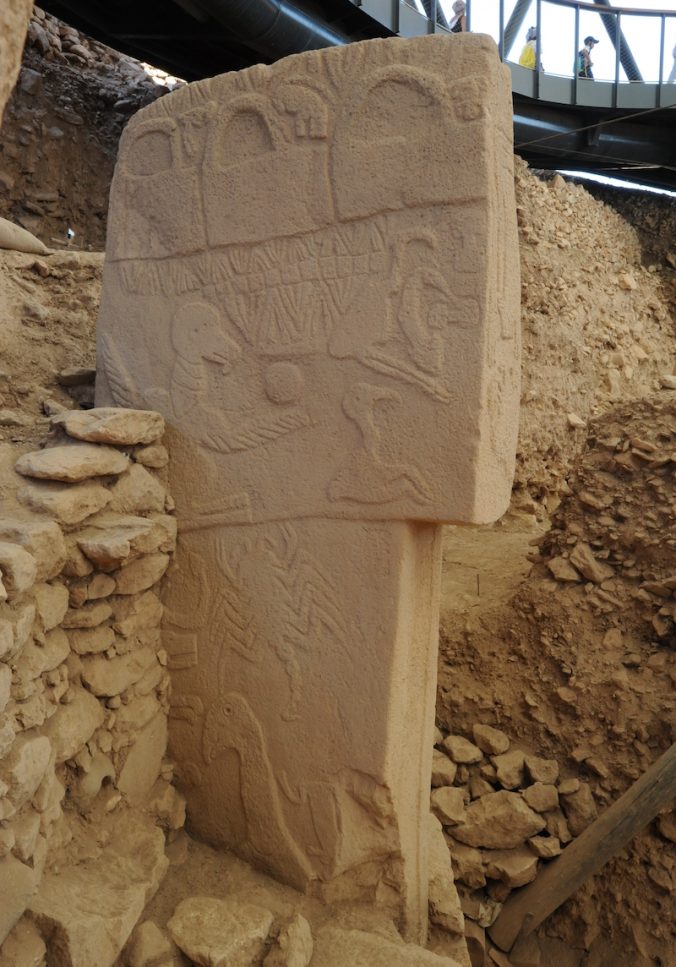















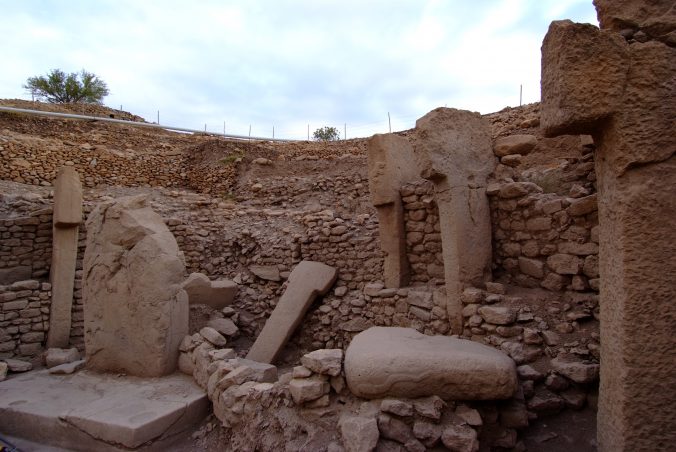
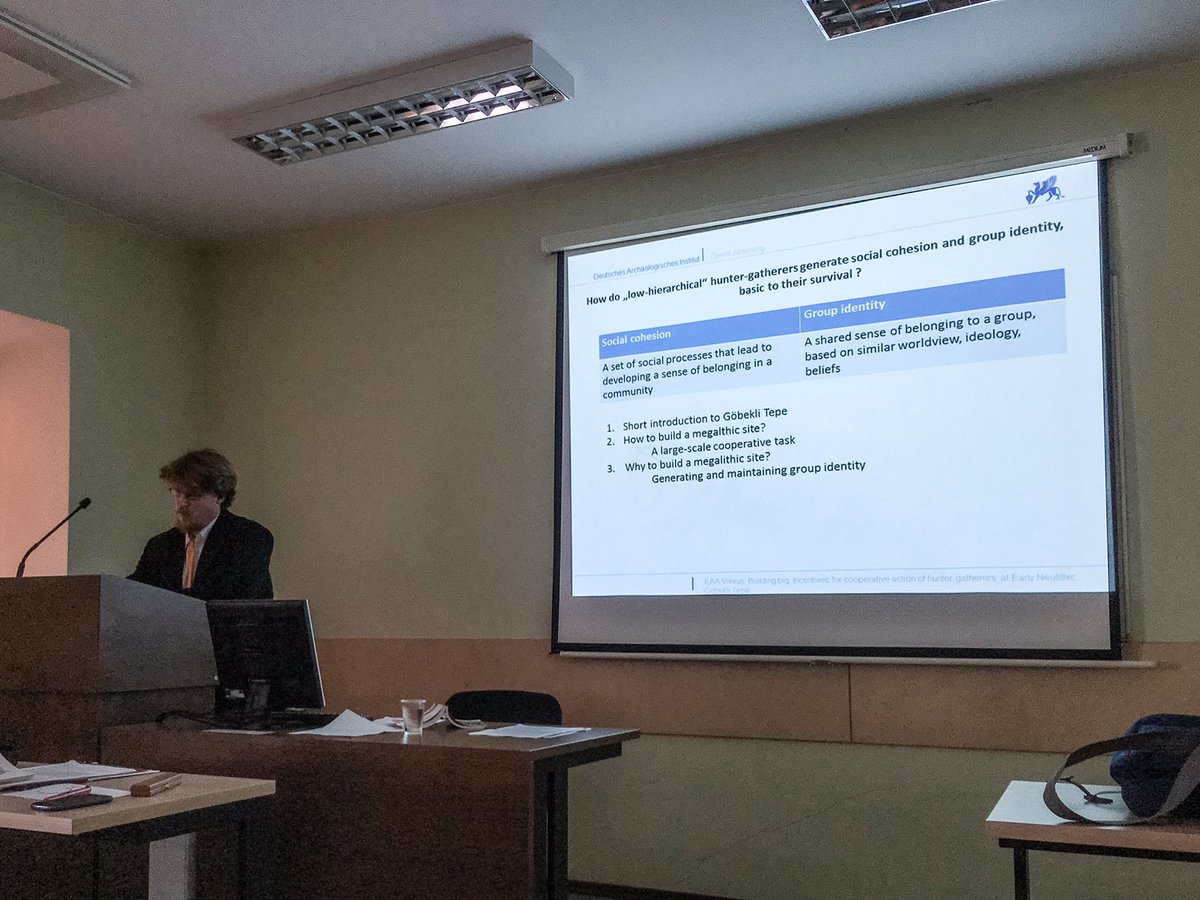

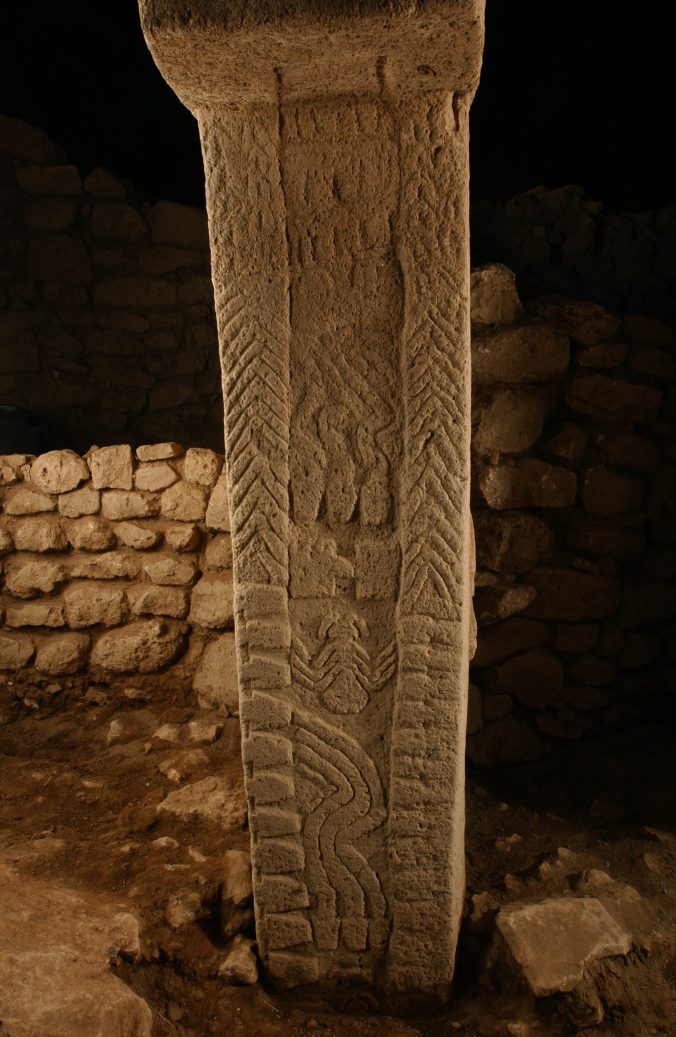
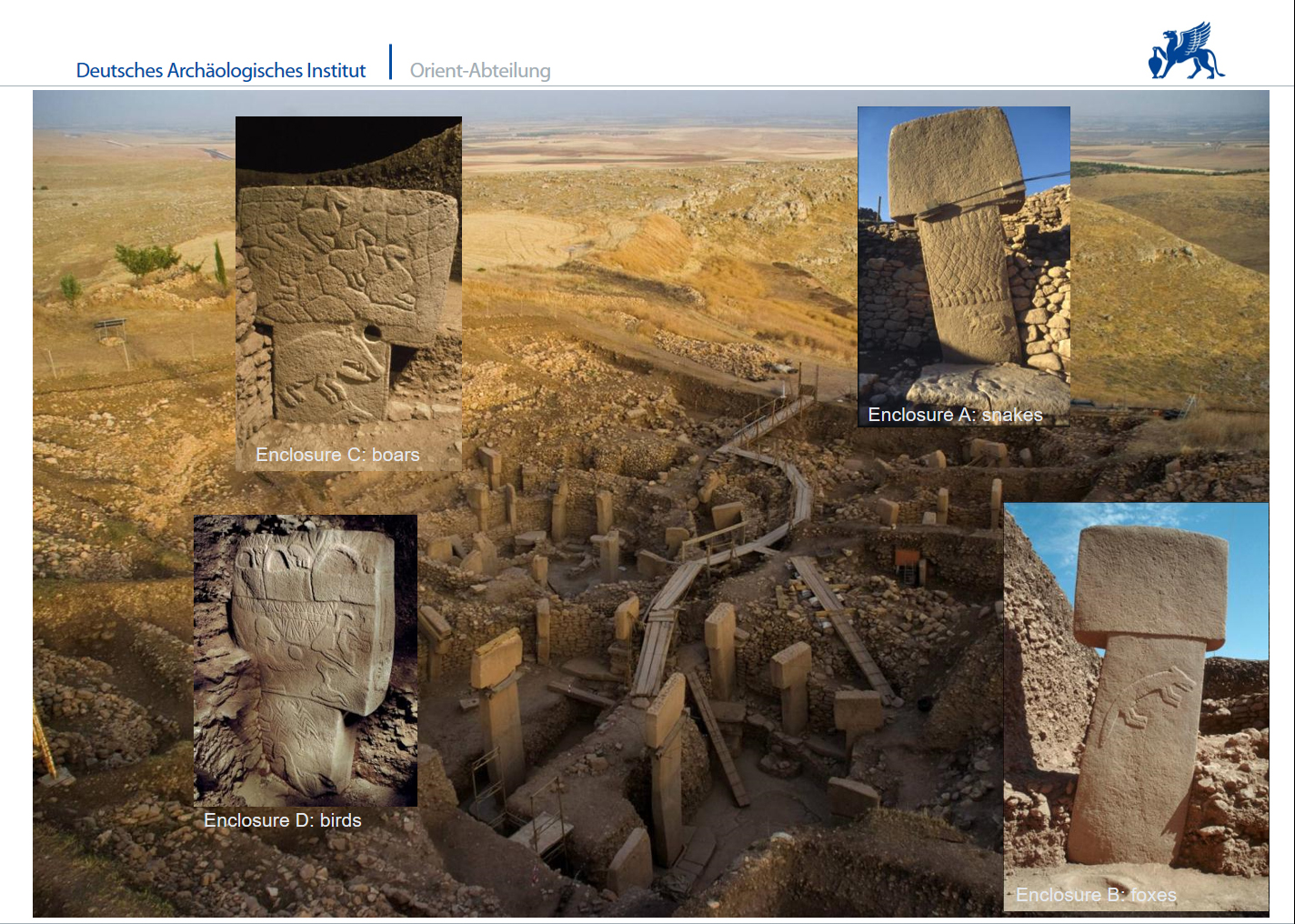

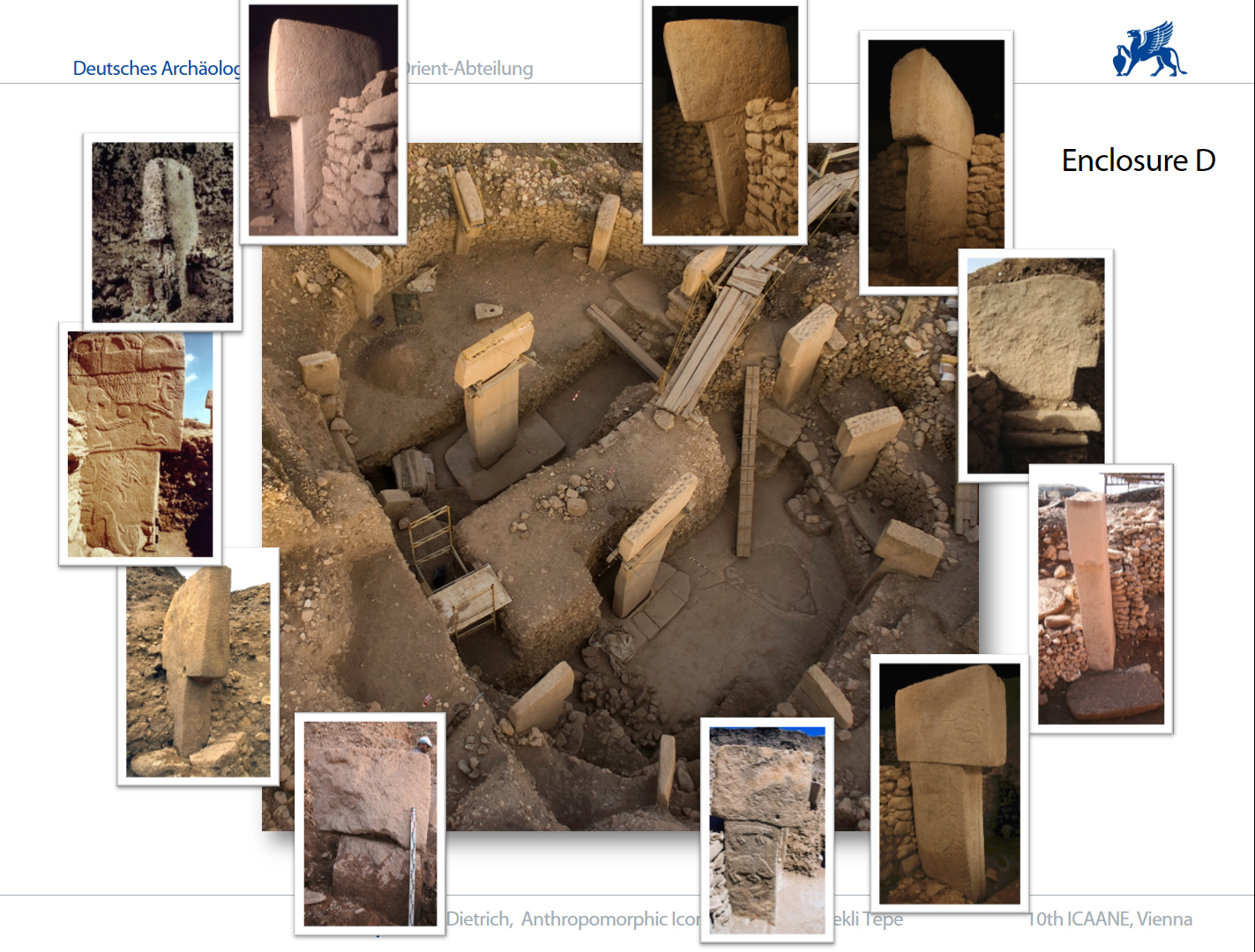
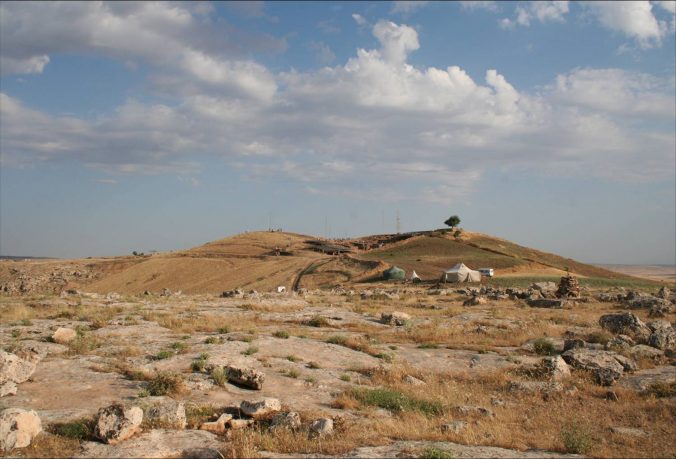


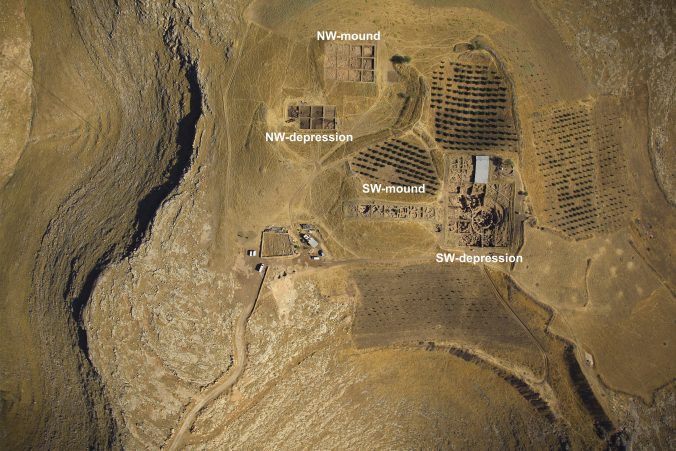
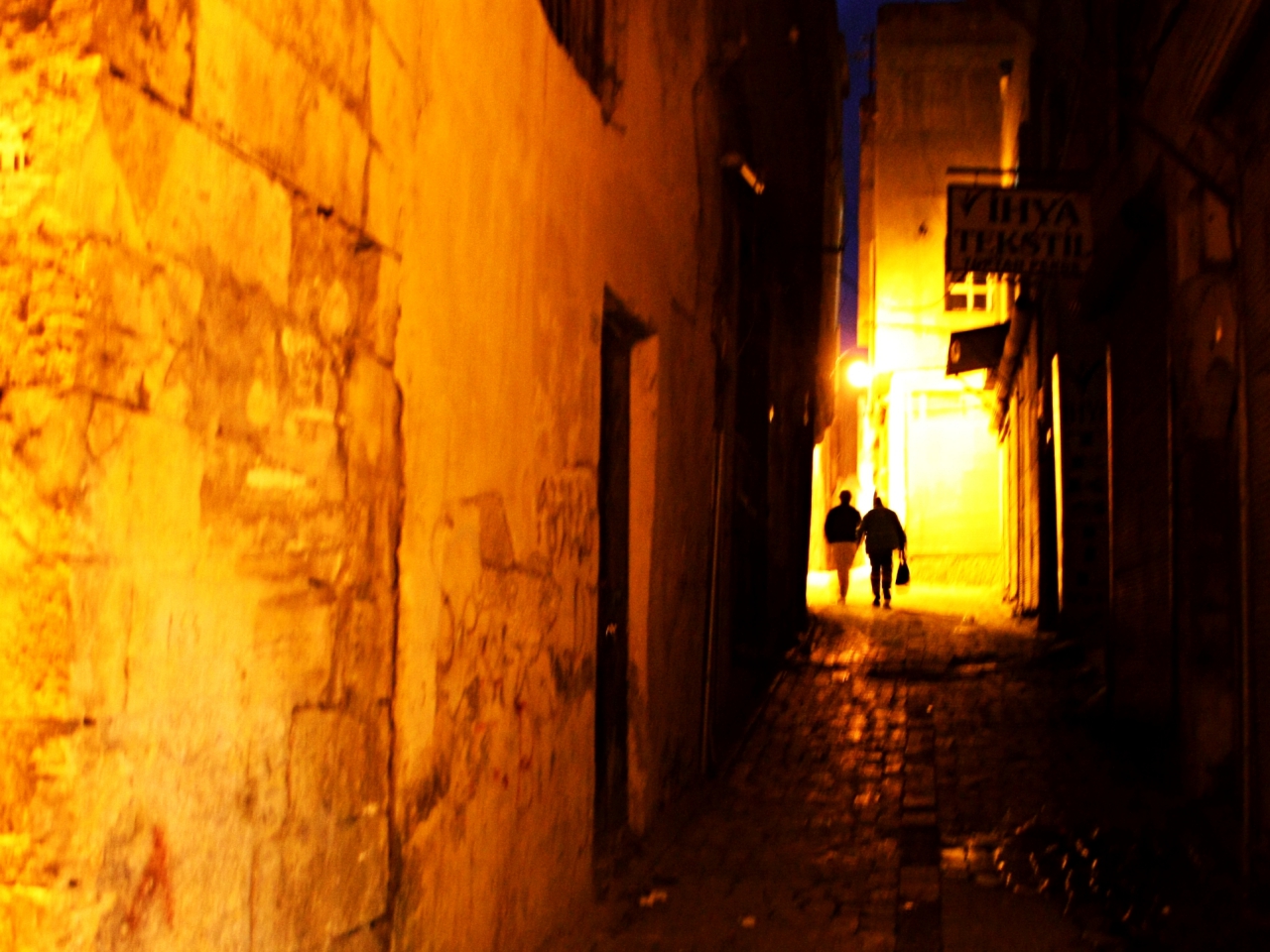



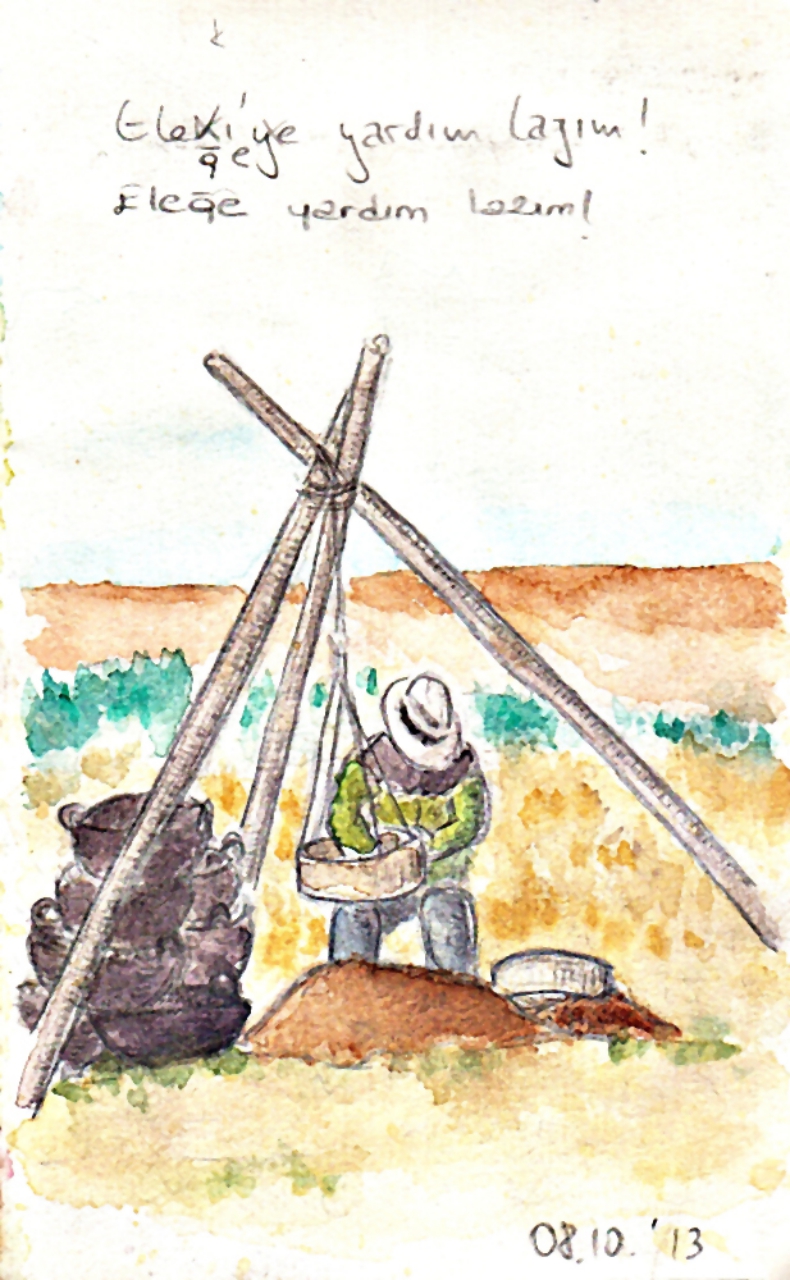
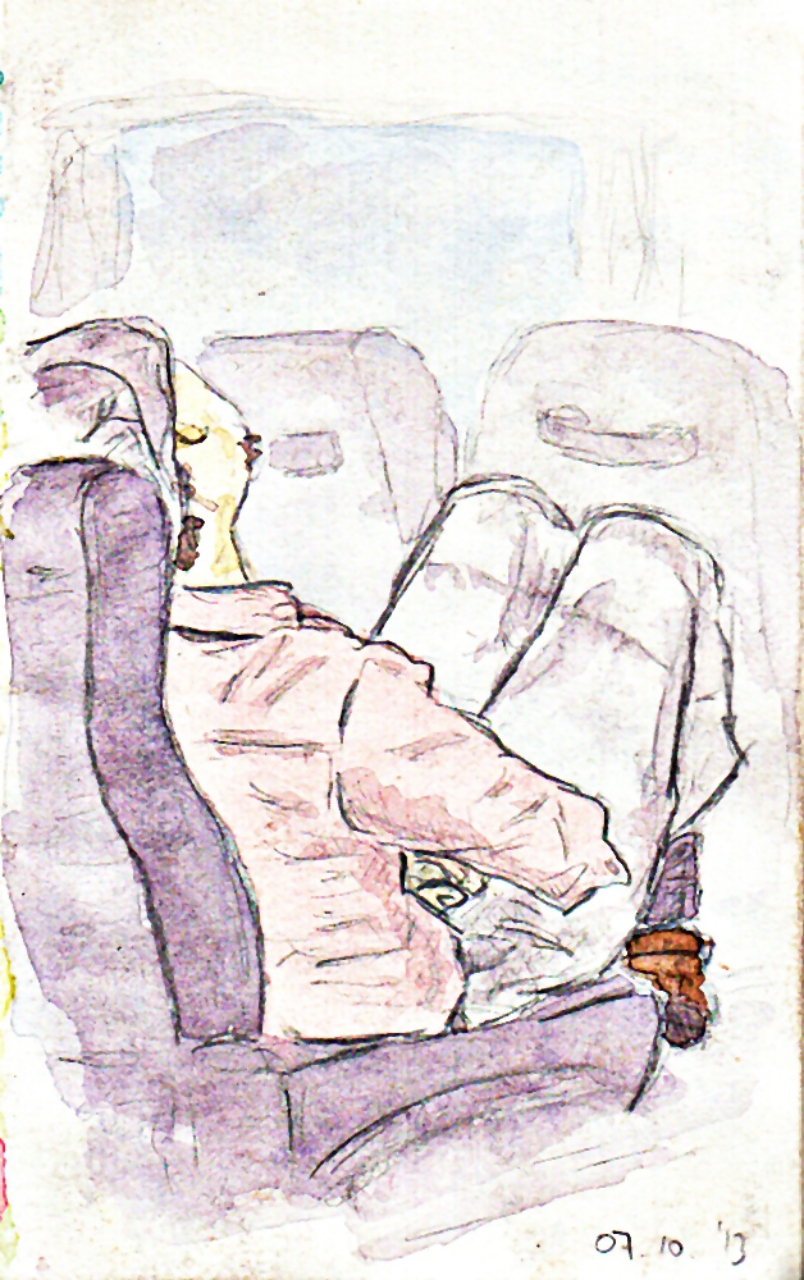
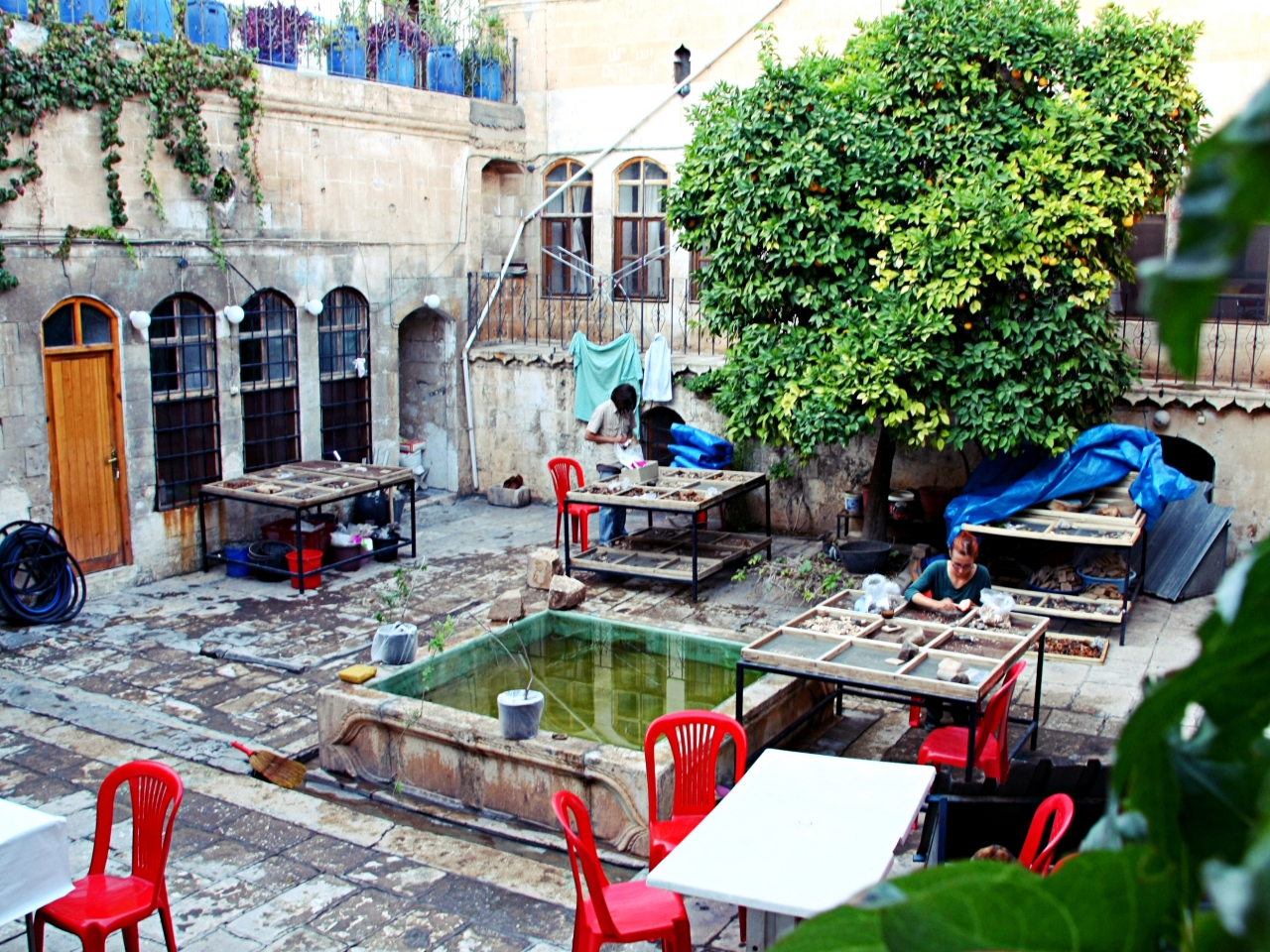
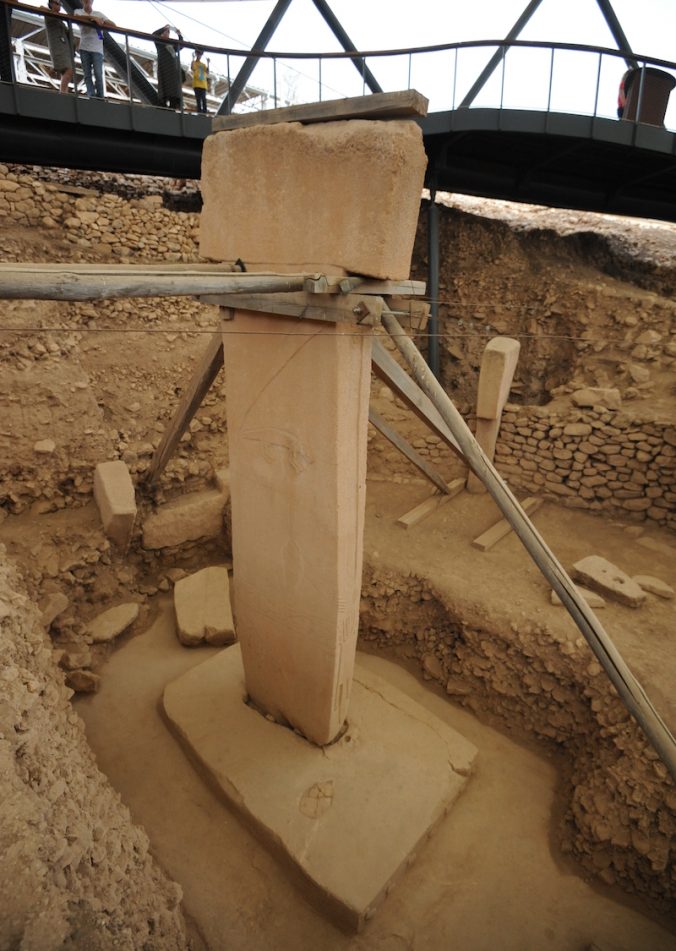

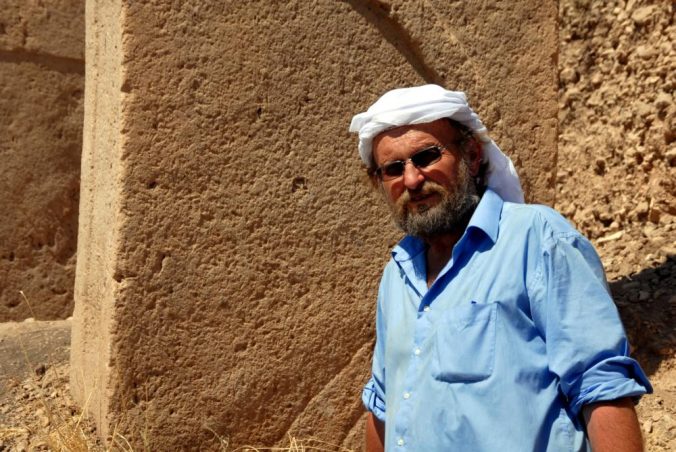
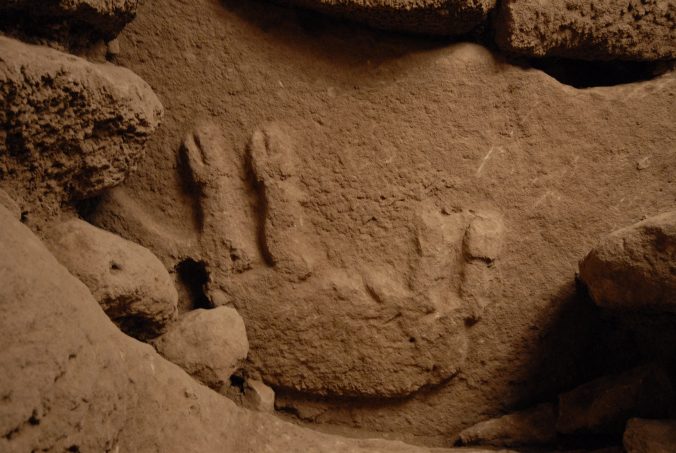
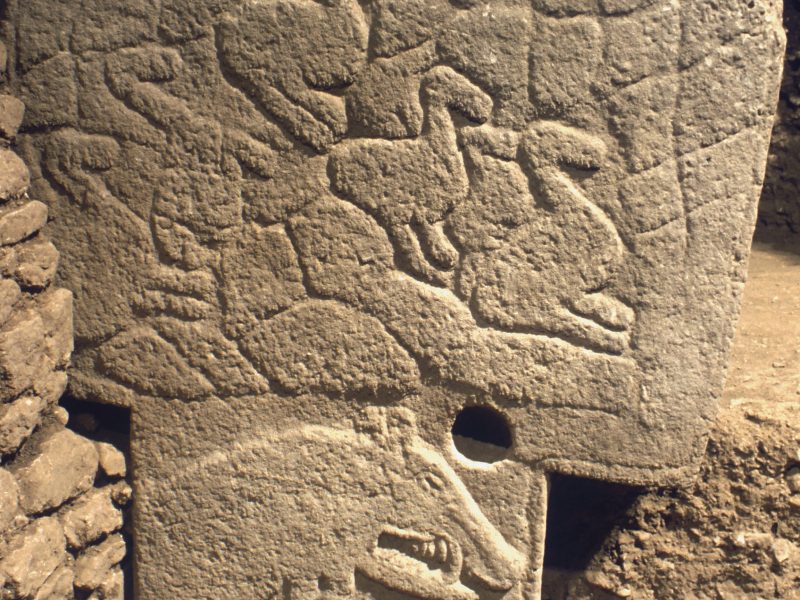
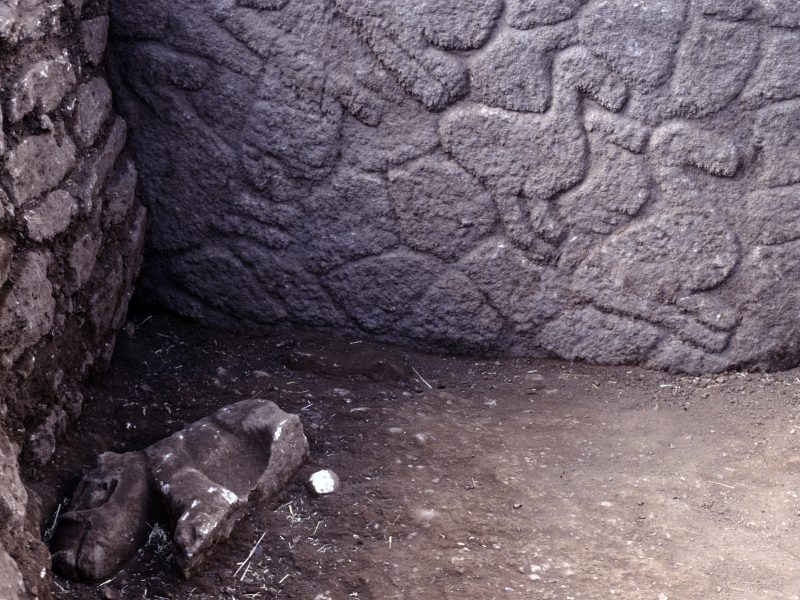
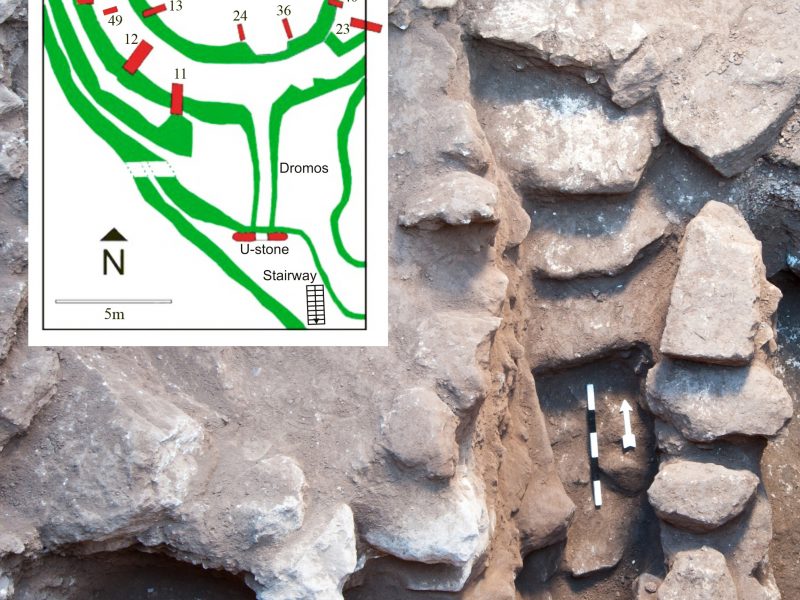
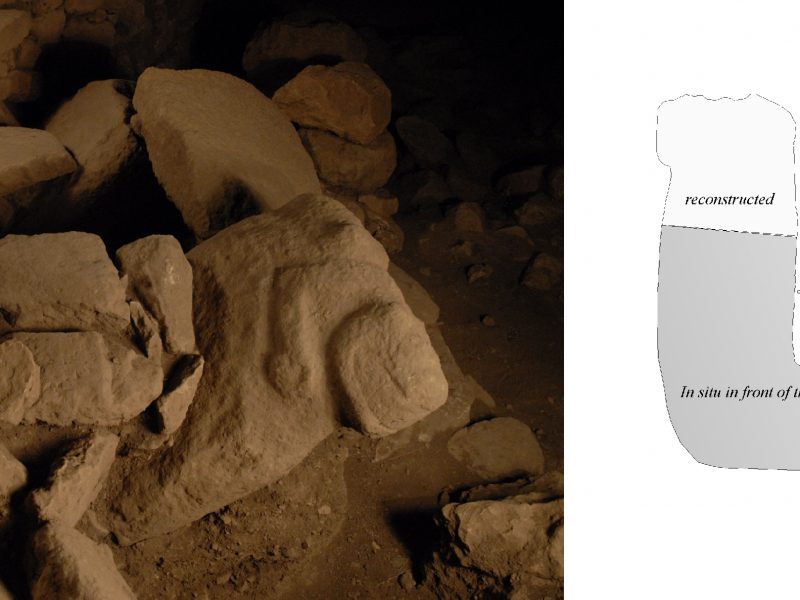
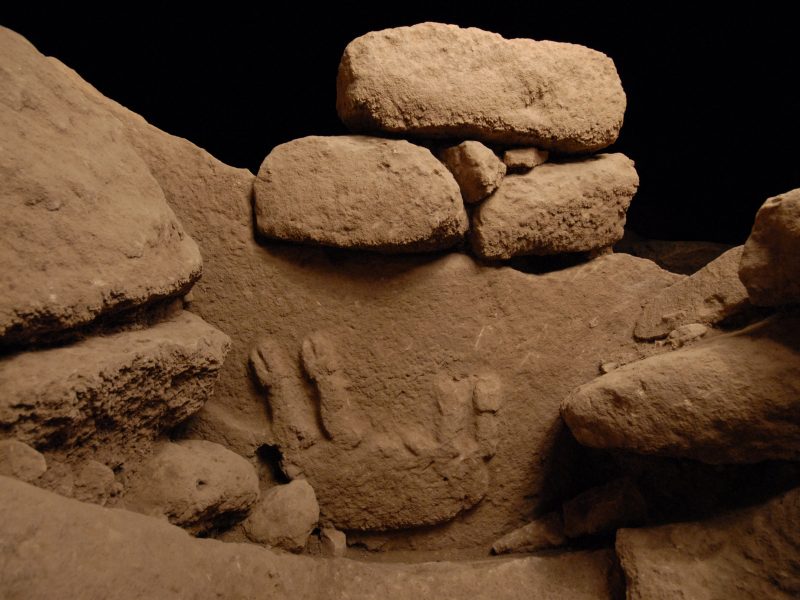




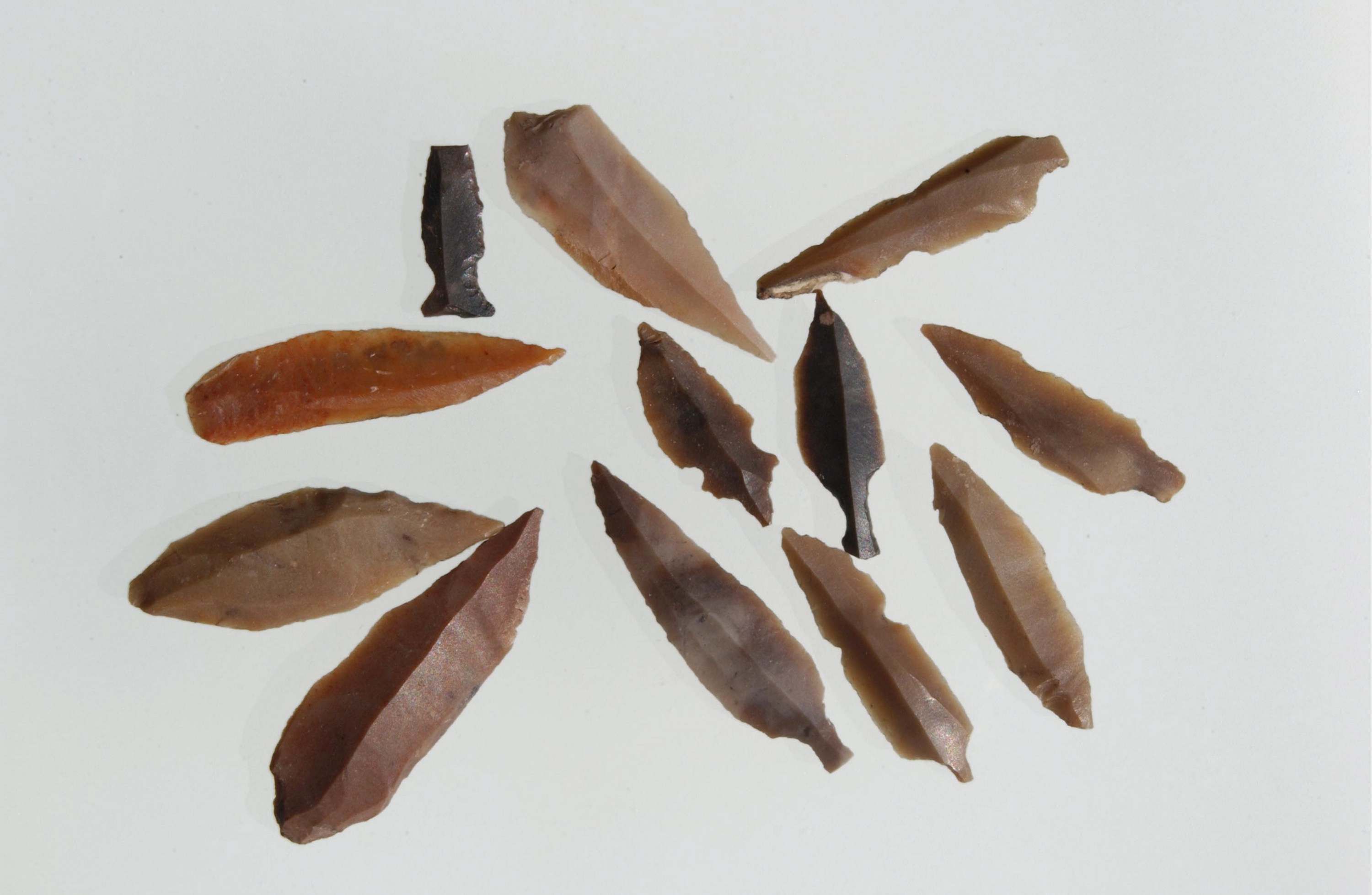
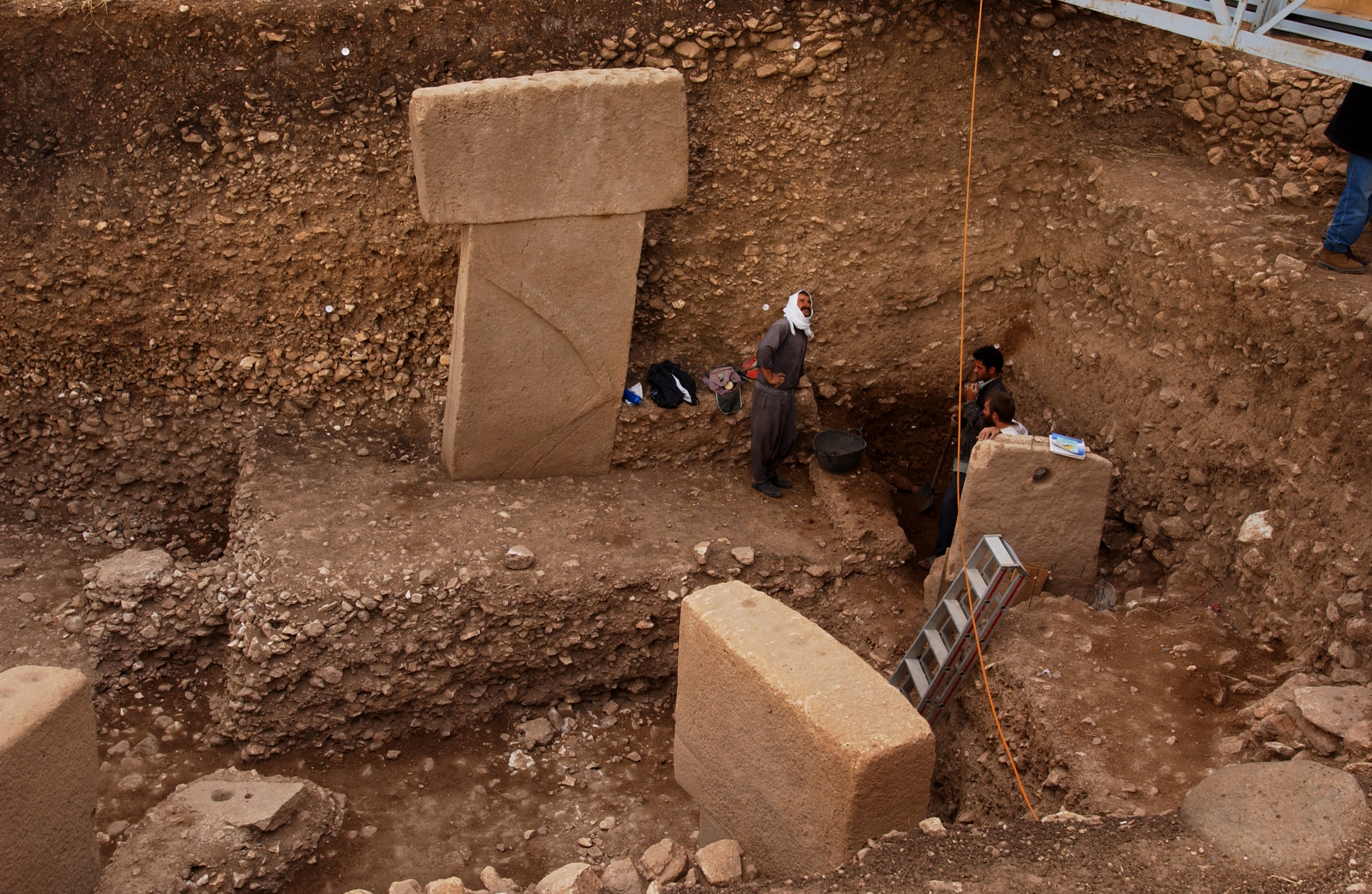
Recent Comments